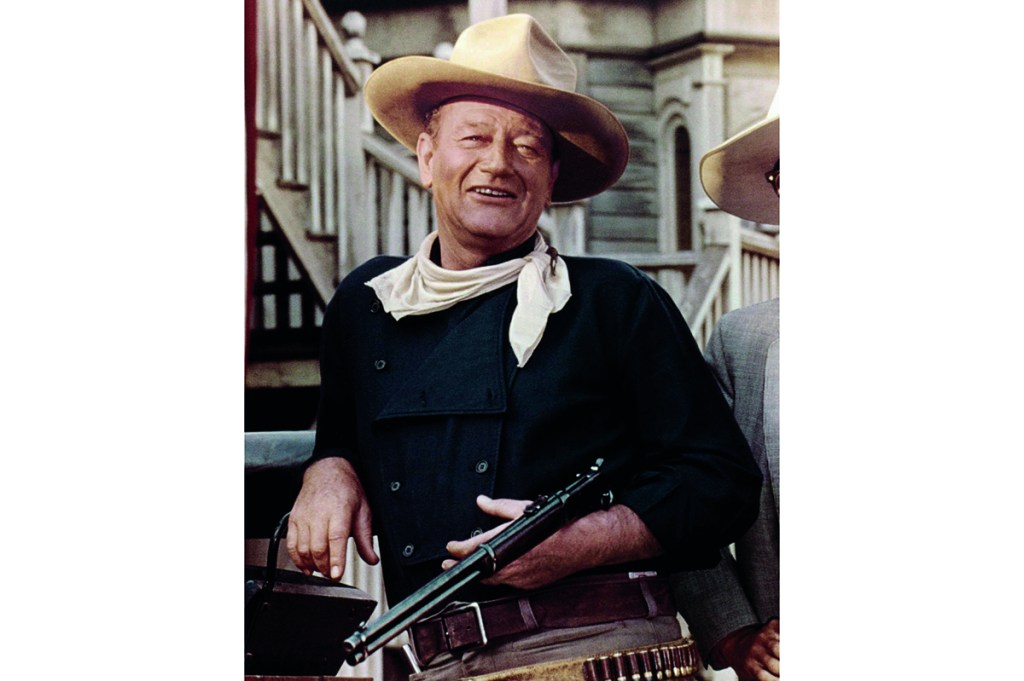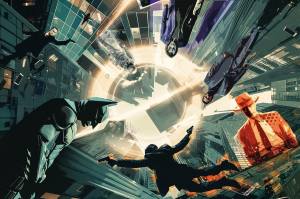Stars don’t sell movies anymore. They’re even becoming hard to distinguish. Which Chris is in Guardians of the Galaxy and which one plays Captain America? Is Emma Stone in Harry Potter or Cruella? Interchangeable entertainers are nothing new, and I’m sure moviegoers in the 1940s got the Roberts Walker, Taylor, Young and Montgomery mixed up, but those names still sold the movie. Why would anyone pay money to see something called The Clock in 1945 unless it starred Robert Walker and Judy Garland? Could a movie really be that good unless it had Bette Davis or Marlon Brando, Eddie Murphy, Bruce Willis or even Adam Sandler?
In the absence of “IP” (intellectual property), a good story only got you so far — at least in the eyes of the public, who have always been sensibly suspicious of “unknowns.” But this creates the feedback loop that makes producers and studio executives so terminally timid. Breakout stars like Tiffany Haddish, Sylvester Stallone and Melissa McCarthy are all exceptions that prove the rule: the people want what they know. Today, when characters and not the actors who play them sell movies, people still go to see Marvel characters because they know them. Martin Scorsese’s comparison of these films to “amusement parks” is correct, but, again, nothing new: before Psycho in 1960, most people showed up to movies late, and then it took a few more years before cinema became widely considered an art form.
John Wayne never crossed that line. He gave people what they wanted. Unlike his peers Robert Mitchum, Henry Fonda and William Holden, Wayne stuck to what he knew best, and what he knew best of all was John Wayne. Born Marion Morrison in 1907 and rechristened John Wayne by the director Raoul Walsh, the most famous cowboy of all time toiled in relative obscurity through most of the 1930s and most of his twenties: after Walsh’s early widescreen epic The Big Trail, a showcase for Wayne, flopped in 1931, he made a living as a working actor, not a movie star.
Wayne appeared in dozens upon dozens of Westerns for Republic Pictures, all while being mentored by John Ford. That director turned Wayne into the icon we know today with 1939’s Stagecoach, with a striking dolly shot that introduces Wayne’s Ringo Kid. Ford revised this shot twenty-seven years later in The Searchers, with a dolly in on an older, more complicated Wayne, horrified by the sight of his white niece living among “savage” Comanches. But these notions and moments of pure cinema were of no concern to Wayne, and Ford, his most frequent collaborator, rarely talked about his own work. So the John Wayne we know now is the John Wayne made famous in 1939, with a dash of his infamous 1971 Playboy interview, where he was asked, among many other things, if he “limited” the number of black actors in his films: “Oh, Christ no. I’ve directed two pictures and I gave the blacks their proper position. I had a black slave in The Alamo.”
Wayne was not a man interested in making art or pushing progressive politics. But he was very interested in being liked, being seen and being John Wayne. The public will only let you be a movie star for a certain amount of time, and Wayne, along with Clint Eastwood, is again an exception that proves the rule. Forty-two years after his death, Wayne still trends on social media, almost always after someone has “discovered” the Playboy interview. It is a fairly shocking piece, especially considering how far ahead his competition was by 1967. After Sergio Leone’s Dollars trilogy hit America that year, Eastwood was the heir apparent to the cowboy king. Yet Wayne resolved not to relinquish his throne: he kept making Westerns with Andrew V. McLaglen and Henry Hathaway, finally winning an Oscar for True Grit in 1970.
Unlike Eastwood, Wayne was not skilled at changing lanes. Personally put off by the counterculture and New Hollywood directors like Robert Altman, he couldn’t transition to the 1970s. Not that he didn’t try: though he turned down many roles he later wished he played, including Don Siegel’s Dirty Harry in 1971, he eventually made two cop movies, McQ in 1974 and Brannigan in 1975. By then, Ford was dead and Wayne had only half a decade left himself.
In both movies, he plays antihero detectives who are hotheaded, partially retired and lonely. He’s forced back into duty under this or that pretext, chases and gunplay follow, and he ends up with a nice lady by the end. Simple enough. To say that a sixty-something John Wayne with one lung running over rooftops and chasing down drug dealers with submachine guns strains credulity is an understatement, but it doesn’t matter, mostly because of what Ford taught Wayne when he was young: acting is entirely in the eyes and in gestures. Wayne was one of the most brilliant and evocative movie actors of all time. His gait, his sighs, his sunken face communicate so much more than a Lee J. Cobb monologue.
McQ and Brannigan are both elegiac and subtle in a way that’s foreign to most action movies. Put Steve McQueen, Paul Newman, Charles Bronson or even George Peppard in these roles and the movies would change completely. Before actual superheroes made billions for movie studios, movie stars served the same purpose, with their own lore and “expanded universes” — their real lives — and when you see Wayne as “McQ” (McHugh) refuse a line of cocaine from an informant (“That stuff can sniff itself”), you buy it completely. If Steve McQueen played McQ (it’s clearly not a stretch), he might’ve considered doing that line of coke. Brando would have readily dabbled. Not John Wayne.
When you see Wayne as McQ mow down corrupt cop Clu Gulager in a car chase on a beach with a MAC-10 (the first time that gun ever appeared in a movie), you know it’s his last ride. No matter if he makes it out of London alive, Chicago’s Jim Brannigan doesn’t have much time left. In both movies, there’s no need to make anything explicit, because it’s obvious from the beginning that this is a man trying very hard to do something new and failing. That’s what makes Brannigan, and particularly McQ, so compelling: we’re not only watching a fictional cop running his last races, we’re watching a movie star with one foot in the grave and the other trying to climb back to the top. It’s beautifully sad in a way that you rarely find in popular cinema, despite the form’s unique ability to capture time — or, as Jean Cocteau put it, to “record Death at work.”
One place you can find this kind of grace is in Clint Eastwood’s recent films, particularly 2018’s The Mule and this year’s Cry Macho. In both he plays men of few words and many regrets, just trying to do right by the people he meets and those who have stuck by him. Like Wayne, Eastwood has never been more than a movie actor — it’s impossible to imagine him on the stage — but the difference between the two of them is that Eastwood succeeded not only in managing his image through turbulent cultural changes, but also in establishing himself as a director.
Wayne only ever directed The Alamo and The Green Berets (the sole pro-Vietnam movie out of Hollywood), while Eastwood’s body of work arguably outpaced his acting career almost thirty years ago, with the release of Unforgiven. That film was a premature eulogy, and Eastwood has been blessed with more time to make unique movies about a subject we all strenuously try to avoid: getting old.
In McQ and Brannigan, we see two men simultaneously — Wayne and the character he’s playing — trying to prove they can still be heroes for us. They are raging against a dying light, at times looking completely ridiculous and without any wisdom or maturity. In Eastwood’s films, that’s all that’s left: charity, community, hope and kindness. Wayne never knew that peace. Time waits for no one, not even cops and cowboys.
This article was originally published in The Spectator’s February 2022 World edition.


















